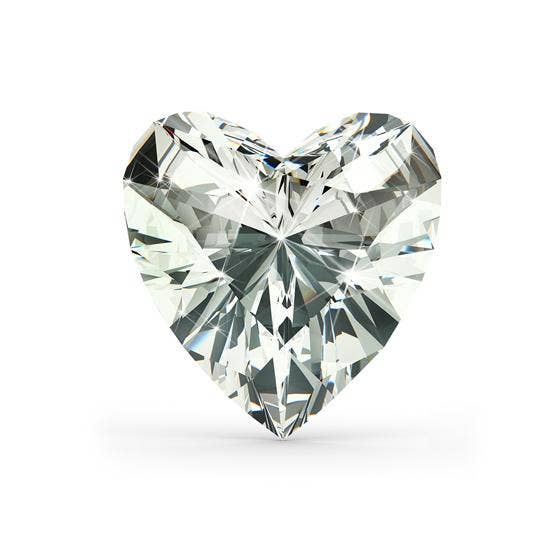Cut — The shape of a diamond refers to its physical appearance, while the cut refers to how well the diamond’s features interact with light. Because heart-shaped diamonds are a “fancy” cut, they have no official grade.
Clarity — Clarity, which refers to the number of inclusions and blemishes in a stone, is very important when it comes to heart diamonds. Each diamond will have a different amount of these flaws, ranging from SI2 (having the largest amount) to VVS1 (having the least). Because of the shape and cut of heart diamonds, flaws will be obvious—but if a diamond you like seems flawless to you, she probably won’t be able to spot any blemishes either.
Color — In a diamond, color refers to the absence of color. Clean Origin only offers diamonds from J to D, though there are diamonds with color from Z (containing the most color) to D (containing the least color). Heart diamonds do retain their color, so if you prefer a diamond to look white, choose a color close to D. If your significant other won’t mind a warmer stone, a diamond on the other end of the spectrum will work well.
Carat — One of the most important factors when it comes to heart diamonds is their carat size. They must be large enough for their distinctive shapes to be obvious; too small and they will appear round. Often, halos can distract from the heart instead of making it look larger. However, by purchasing a lab-grown diamond, you can save 20-30% on the price—enabling you to increase carat size enough for the romantic shape to appear obvious.

